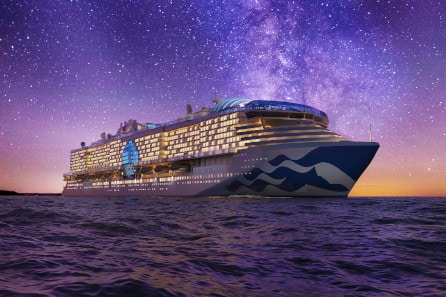High Rises Amidst Buddhist Temples in Busan South Korea
Amidst the serene and tranquil ancient Buddhist temples of Busan, South Korea, is a bustling metropolis complete with skyscrapers, creating a starkly contrasting city that embodies much of what modern South Korean culture is like. Passengers on an Asia cruise vacation have the chance to experience the yin and yang of Buddhist culture at this evolving destination. As the second largest city in the country, Busan has managed to meld ancient history with contemporary life without missing a beat.
Many of the religious temples have held on to their integrity while attracting throngs of international visitors, and the financial district has helped the city become one of the nation's economic capitals. During a South Korea cruise, Princess passengers will have the opportunity to experience these contrasting cultures with shore excursions to temples and the city center.
Enjoy peace and tranquility in Gyeongju
The coastal city of Gyeongju is a relic of ancient South Korea that comes alive with blossoms and greenery during the summer months. The breathtaking Tumuli Park, located in the southwest corner of Gyeongju, contains more than 20 royal tombs that date back more than a millennium. With its unique green hills and serene paths, Tumuli is a wonderful place for those on Asian shore excursions to take a stroll and get to know Korean history.
The Cheonmachong (Flying Horse) tomb once belonged to an unnamed king from the Shilla dynasty and dates back to the 5th century. During its archaeological excavation in 1973, numerous artifacts were discovered, including a gold crown, gold and silver jewelry and weapons.
Take an unforgettable photo at the Bulguksa Temple
Situated on the side of Mt. Tohamsan, the Bulguksa Temple is a beautiful oasis where those on Asian cruises can take a fresh breath of cool mountain air as they absorb the magnificent scenery. A prime example of Shilla architecture and South Korea's continuous devotion to Buddhism, the temple was designed as a symbolic representation of various rituals and mantras. The 33 steps leading to the main complex, for example, correspond to the 33 steps toward enlightenment.
Two of the pagodas at Bulguksa are considered national treasures and were designed by legendary craftsman Asadal in the 8th century. While the Dabotop pagoda boasts complex ornamentation, its sister Seokgatap is simple in design - combined, they embody the Buddha's contemplation of and detachment from the physical world. View Asia cruises.



